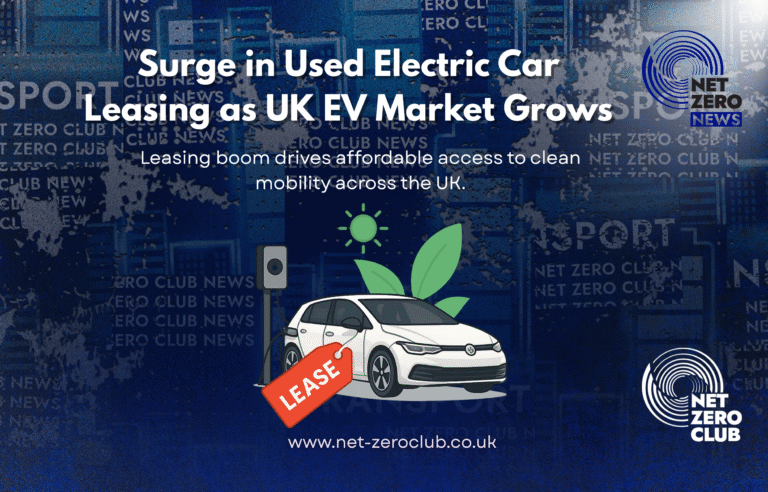PHEVs Emit 5x More CO2 Than Manufacturers Report, Study Reveals

Hello, Champions of Net Zero!
In a startling revelation from the European Union, it has been discovered that plug-in hybrid electric vehicles (PHEVs) are not the eco-friendly alternatives they were marketed to be. Recent data indicates that these vehicles pollute almost as much as traditional petrol and diesel cars, undermining their role in the transition towards a greener automotive future.
According to an in-depth study conducted by Transport & Environment, which analysed data from 127,000 PHEVs, these vehicles emit significantly more carbon dioxide (CO2) than previously claimed. On average, PHEVs emit just 19% less CO2 per kilometre compared to their petrol and diesel counterparts, challenging the narrative that they are a viable solution for reducing vehicular emissions.
The premise behind PHEVs is simple: they are designed to alternate between a rechargeable battery and a traditional combustion engine, thereby offering a dual mode of operation that is supposed to reduce emissions and fuel consumption. However, real-world data tells a different story. In practice, the CO2 emissions from plug-in hybrids can be almost five times higher than the figures reported during official testing. The discrepancy arises from the difference between the regulated Worldwide Harmonised Light Vehicle Test Procedure (WLTP) and how vehicles are actually driven on the roads.
Analysis from the European Environment Agency (EEA) reveals that PHEVs emit an average of 135 grams of CO2 per kilometre. In contrast, conventional petrol and diesel vehicles emit around 166 grams per kilometre. This stark contrast raises questions about the effectiveness of PHEVs in achieving the EU’s ambitious climate targets.
Even in electric mode, PHEVs are far from the zero-emission vehicles they are touted to be. The EEA data shows that these hybrids consume an average of three litres of petrol per 100 kilometres, leading to CO2 emissions of 68 grams per kilometre in electric mode. This figure is a staggering 8.5 times greater than what is claimed during official testing. The electric motors in PHEVs are often insufficiently powerful for high-speed travel or steep inclines, necessitating the use of the petrol engine more frequently than expected. In fact, data indicates that the engine operates during nearly one-third of the distance driven in electric mode.
The financial implications of owning a PHEV are also concerning. The hidden fuel consumption—whether in electric or engine mode—means that drivers may end up spending an additional €500 (approximately £435) each year on fuel and charging compared to what they were led to believe. Furthermore, the average cost of purchasing a PHEV is significantly higher than that of battery electric vehicles (BEVs). In 2025, the average selling price of PHEVs in Germany, France, and the UK is projected to be €55,700, which is €15,200 more than the average price of a BEV, as reported by Bloomberg Intelligence.
Lucien Mathieu, the cars director at Transport & Environment, has been vocal about the findings, declaring, “Plug-in hybrids are one of the biggest cons in automotive history. They emit almost as much as petrol cars. Even in electric mode, they pollute eight times as much as official tests claim. Technology neutrality cannot mean ignoring the reality that, even after a decade, PHEVs have never delivered.”
The study further highlights that emissions from PHEVs are on the rise, largely due to a growing trend towards longer electric ranges. While larger batteries may provide a more extended electric driving range, they also increase the weight of the vehicles, resulting in higher fuel consumption when the combustion engine is in use. The analysis showed that PHEVs boasting an electric range exceeding 75 kilometres emit more CO2 on average than those with a range between 45 and 75 kilometres (around 28 to 47 miles).
Among the major automotive manufacturers, Mercedes-Benz has been cited as having the most significant gap between official and real-world emissions for its PHEVs. According to the 2023 data, their vehicles emit an average of 494% more CO2 than officially stated, with the GLE-Class exhibiting a staggering 611% divergence from its official emissions rating. Other leading European carmakers also face scrutiny, with emissions reported to be around 300% higher than their official ratings.
As the debate surrounding PHEVs continues, the European automotive sector is lobbying for the right to sell these vehicles beyond the EU’s 2035 deadline for zero-emission cars. There is also a push from car manufacturers to have the EU cancel the ‘utility factors’—which estimate the proportion of driving done in electric mode—that have been instituted to adjust the CO2 ratings for plug-in hybrids. These utility factors, set for implementation in 2025 and 2027, aim to narrow the gap between official emissions figures and real-world data, thus tightening the EU’s CO2 targets and encouraging a shift towards more battery electric vehicles.
Lucien Mathieu expressed concern over this lobbying, stating, “Weakening the rules for plug-in hybrids is like drilling a hole in the hull of Europe’s car CO₂ law. Instead of steering the market toward affordable zero-emission cars, carmakers will flood it with expensive, polluting PHEVs. That risks sinking the EV investment certainty the market desperately needs.”
The UK’s Energy and Climate Intelligence Unit (ECIU), a non-profit organisation dedicated to fostering informed discussions on energy and climate change, has weighed in on this issue, suggesting that consumers are being misled by the marketing of PHEVs. Colin Walker, head of transport at ECIU, commented, “In reality, PHEVs are little better than regular petrol and diesel cars when it comes to the fuel they consume, the CO2 they produce, and the money they cost to run.”
Walker further cautioned that the UK government’s recent decisions to relax EV sales targets could inadvertently encourage the sale of PHEVs at the expense of true electric vehicles. “Given how much more fuel these vehicles burn than their manufacturers claim, the cost of this decision to the environment and to drivers’ wallets could be significant. Pushing the sale of vehicles which burn five times more fuel than their manufacturers claim certainly has echoes of the infamous Dieselgate scandal.”
He concluded by emphasizing the need for a shift in focus: “Rather than distracting people with this outdated and expensive technology, the Government and car manufacturers could instead concentrate on helping regular families transition to EVs. These vehicles not only provide genuine reductions in greenhouse gas emissions but also offer significant savings in running costs—potentially hundreds, even thousands, of pounds a year.”
As we navigate the complexities of transitioning to a low-carbon future, it is crucial for consumers to remain informed and vigilant. The revelations concerning PHEVs serve as a reminder that not all green technologies are created equal, and that genuine progress in reducing emissions requires transparency, honesty, and a commitment to true sustainability.

 Got net-zero news, project updates, or product launches to share?
Got net-zero news, project updates, or product launches to share? 

